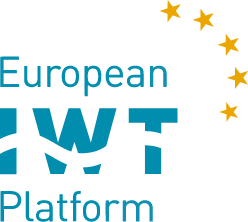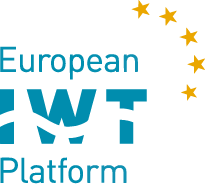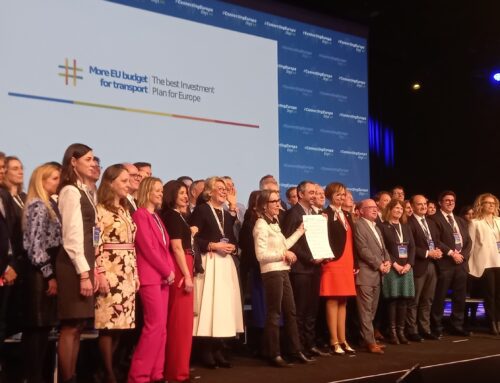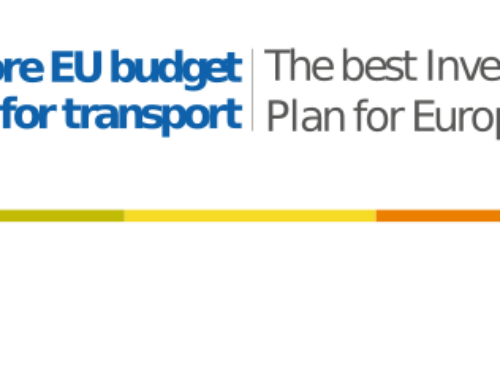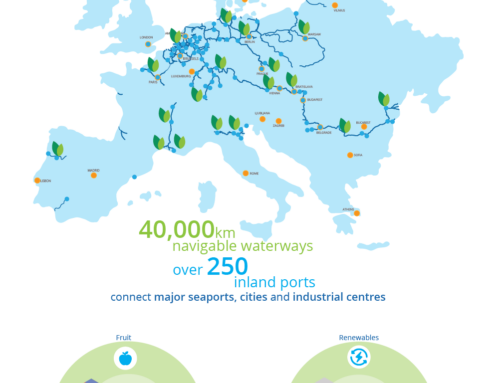In the last week of January 2022, the 39th session of the UNECE – ADN Safety Committee took place. Due to the ongoing pandemic situation and travel restrictions, the meeting was held in a hybrid form with the interpretation provided. IWT Platform’s Secretaries from the Environment and Safety Committee participated in the meeting in their capacity of representing our parent organisations, EBU and ESO.
Session’s detailed debrief:
Terms of reference for an informal working group on certificates and other documents on board in electronic form
In accordance with the request of the ADN Safety Committee, the CCNR is presenting a working document with a proposal for terms of reference and a roadmap for an informal working group to be set up to deal with the digitisation of certificates and other documents to be carried on board. The working group will examine which documents are suitable for use in electronic form and under which conditions. Corresponding regulations are to be worked out for the ADN at the appropriate time.
With regard to the documents and papers to be considered, the ADN Safety Committee concluded at its 38th meeting that, with the exception of the transport documents, all the documents and other papers required in accordance with ADN 8.1.2.1, 8.1.2.2 and 8.1.2.3 must be available in physical form (paper).
The informal working group should therefore focus its work on the certificates and other documents referred to in 8.1.2.1, 8.1.2.2 and 8.1.2.3.
The terms of reference also include the data formats to be considered. Ongoing work by other regulatory institutions must be taken into account.
In accordance with the proposal of the Roadmap, the Safety Committee has issued a mandate to set up an informal working group on the basis of the terms of reference and has appointed a chairperson. EBU/ESO will also participate in the informal working group. The CCNR Secretariat will provide secretariat services for the informal working group.
The roadmap also foresees that the informal working group could hold its first meeting in spring 2022 to review the terms of reference and set a timetable for its work. The chair of the informal working group could report on this at the 40th meeting of the ADN Safety Committee in August 2022.
The ADN Security Committee requests the informal working group to submit a working document for the 42nd meeting of the ADN Security Committee in August 2023 with proposals for the adoption of rules on dematerialisation of documents and other papers for the ADN 2025.
Updating of references to standards
The German delegation reviewed the citations of standards in the 2021 edition of ADN to ensure that they are up to date and drafted proposals for amendments concerning the updating of references to EN, ISO and DIN standards, IEC standards and ASTM standards with effect from 1 January 2023. Transitional provisions are also to be introduced. In the submitted document, the ADN Safety Committee is informed that for some citations of standards contained in the regulation attached to the ADN, an incorrect date of issue was given when they were first included. The standards are therefore not to be found and their application is impossible.
In several paragraphs, the ADN refers to EN, ISO and DIN standards, IEC standards and ASTM standards that have been revised and replaced. The problem is that when new ships are built or equipment or components of a ship are replaced, it is not possible to purchase products on the market that comply with the old standards. If instead products are used which comply with the new standards, the inspection body or classification society cannot certify in its inspection report according to section 1.16.3 ADN the compliance with the applicable provisions of the regulation attached to the ADN and the products have to be objected to during inspections as not complying with the regulations. To avoid this situation, the references in the ADN need to be updated.
The ADN Safety Committee has accepted the changes for the ADN edition 2023 in the sense that the references to the standards will be updated, but in part the old standard will continue to apply alongside the new standard, so that there is still no need for action for existing ships. The 1 January 2023 therefore only refers to N.R.M.. This is justified by the fact that some new standards have not undergone any safety-relevant changes and therefore there is no reason to replace systems/equipment. In addition, it was noted that even in the case of a safety-relevant amendment to a standard, it cannot be assumed without further examination that the previous standard does not meet the safety requirements.
EBU/ESO have noted that due to the fact that the standards are not made available to the Safety Committee, a review of the content of the amendment application is hardly possible. In particular, it is not possible to assess whether the proposed transitional provisions are appropriate, because there is no knowledge of whether the standards have changed for safety-related reasons. An assessment of the amendment can therefore only be made by those who have purchased the standards.
The ADN Safety Committee has asked for the formation of a separate, informal working group to deal with the definition of transitional provisions in the course of this year. EBU/ESO and the Dutch delegation have agreed to take on this task together with the German delegation.
Regulations for cofferdams
EBU/ESO submitted a working document with reference to informal document INF.21 of the 37th session and document ECE/TRANS/WP.15/AC.2/2021/25 to further address the issue of cofferdams.
At the 37th and 38th meetings, the safety aspects of ballasting cofferdams were discussed. It was noted that the inland navigation industry has expressed the need to be able to ballast cofferdams in certain situations, such as bridge passes, for reasons of nautical safety. The previous proposal, listed in working document 2021/25, takes into account the requirements of intact and damage stability conditions and calculations. Despite extensive research on behalf of EBU/ESO, it could not be determined why older tankers built before 2000 (based on transitional provisions valid until 2038) are allowed to use cofferdams for ballast and newer ships built after 2000 are not. The regulations date back to the time of single-hull ships, which could be built by welding the steel plates and frames as well as with the earlier technique of riveted (nailed) constructions. Nowadays, all tankers in service are of welded construction, as confirmed by the Recommended ADN Class Societies. The obligation for daily inspection is considered unnecessary.
With informal document 22, EBU/ESO amended their original proposal in accordance with the delegations’ comments during the meeting. According to the final proposal, the provisions should be amended so that according to 7.2.3.1.1 cofferdams must be empty as long as the adjacent cargo tanks are not empty. Before each filling, it must be checked whether the cofferdams are dry (condensation excluded). When not filled, the cofferdams must be checked frequently, at least once a week, to ensure that they are dry (excluding condensation). The current ADN provides for a daily check of the cofferdams. Furthermore, it should be regulated that according to 7.2.3.20.1 cofferdams which are equipped as service spaces and installation spaces which contain insulated cargo tanks must not be filled with water. In addition, it should be added that cofferdams which are not set up as service spaces may be filled with ballast water as long as the adjacent cargo tanks are empty, if this has been taken into account in the intact stability calculation and the leakage stability calculation and filling is not prohibited in Chapter 3.2 Table C Column (20). In all other respects, the provision of 7.2.3.20.1 remains in the same form. EBU/ESO also propose to adapt the transitional provisions.
The Safety Committee discussed the proposal in detail. It was clarified that a research of the reasons for a ban in the past can be helpful. However, the decisive factor for a decision was the assessment from today’s perspective as to whether ballasting the cofferdams is permissible from a safety point of view. The Safety Committee answered in positive terms and adopted the EBU/ESO proposal for amendment by a majority. The new provisions will be included in ADN 2023.
Section 8.2.1 ADN – Provisions for the training of experts
The working document submitted by Germany presents an improved proposal for an amendment concerning the provisions for the training of experts. At its 38th meeting in August 2021, the ADN Safety Committee had discussed some amendments submitted by Germany and asked Germany to submit a revised document reflecting in the proposal the outcome of the discussion in the ADN Safety Committee and in the informal working group on training of experts.
After completion of the basic course, an examination must be carried out within six months of the end of the course. Germany proposes that a failed examination can be repeated twice within the six months without having to attend a basic course again. In addition, if a candidate fails an examination, he or she should be able to retake it in full or in part twice within the six-month period without having to attend an advanced course again. If the 44 points are not achieved, the complete examination can be repeated. If the 44 points are achieved, but not the 20 points in one part, only this part of the examination can be repeated. With regard to the advanced courses “Chemistry” and “Gas”, according to the proposal, in future participation after passing the basic examination should also be possible without the physically available certificate of knowledge, as the absence of a physical certificate does not mean a lower level of prior knowledge, but possible delays in the business process of the competent authority or examining body in delivering the certificate could be the reason for the non-availability at the time of the advanced course.
The Safety Committee accepted the proposal. It was emphasised that all contracting states in which the ADN expert examination is offered must enable and comply with the above-mentioned conditions. An evaluation of the feasibility in practice is to take place in the Safety Committee after about one year. The amendment will be included in ADN 2023.
Rules of Procedure for the ADN Safety Committee
Germany, the Netherlands and Austria have submitted draft rules of procedure for the Safety Committee as requested by the ADN Safety Committee. Worth mentioning from the association’s point of view is regulation 1 d) in Chapter I. of the Rules of Procedure, which stipulates that non-governmental organisations that do not have consultative status with the Economic and Social Council may, subject to the approval of the ADN Security Committee and in compliance with the principles laid down in Parts I and II of Economic and Social Council Decision 1996/31, participate in an advisory capacity in the deliberations of the ADN Security Committee on matters of interest to these organisations. However, EBU/ESO have already been granted their consultative status within the ADN Security Committee in the past by decision of the ADN Security Committee.
The Safety Committee has examined and decided on the proposal and advises the Administrative Committee to adopt these Rules of Procedure.
Special authorisation concerning UN No. 1288 SHALE OIL
The Dutch Government has received a request for a special authorisation for the transport of UN No. 1288 SHALE OIL in tankers. The application was submitted, reviewed and approved in accordance with ADN section 1.5.2. Normally, shale oil is transported by road or rail, but there is a need to transport the product by inland waterway.
At the 38th meeting of the ADN Safety Committee, the special authorisation concerning UN No. 1288 SHALE OIL was considered, but no formal proposal to amend the ADN was made. In the document submitted to the 39th meeting, the delegation of the Netherlands asked for the special authorisation to be examined and for a decision to be taken on whether UN No. 1288 SHALE OIL could be included in the list of substances permitted for transport in tankers in the Regulation. The ADN Safety Committee decided to include 1288 SHALE OIL in Table C. It was clarified that the consignor must classify whether the product is subject to 1288 or whether it is a mixture with a not insignificantly high water content and could therefore fall under a waste category.
Transport of carbon dioxide (CO2) and required refrigeration system
With this document, EBU/ESO are asking the ADN Safety Committee to consider whether it would be possible to harmonise the conditions of transport for CO2, ethylene and LNG by adding remark “42” to column (20) of Table C. The conditions of carriage for CO2, ethylene and liquefied natural gas (LNG) are compared with each other because there are no reasons for different treatment. Remark “42” in column (20) reads: “42. Loading of refrigerated liquified gases shall be carried out in such a manner to ensure that unsatisfactory gradients do not occur in any cargo tank, piping or other ancillary equipment. When determining the holding time (as described in ADN 7.2.4.16.17) it shall be assured that the degree of filling does not exceed 98 % in order to prevent the safety valves from opening when the tank is in liquid full condition When refrigerated liquified gases are carried using a system according to 9.3.1.24.1 (b) of 9.3.1.24.1 (c), a refrigeration system is not required.” EBU/ESO noted that when remark “42” was included, it was added to column (20) of Table C for ethylene and methane. This means that these substances can be transported without refrigeration equipment because of the comparable thermal conductivity and holding time requirements. For CO2, on the other hand, this does not apply, although the ships (type G 1.1) meet the same design and intrinsic insulation requirements in terms of holding time. In the absence of a refrigeration system, the safe transport of carbon dioxide is possible in accordance with the provisions of ADN 7.2.4.16.17 (calculation of the holding time taking into account the anticipated duration of the journey) under the same requirements as for methane and ethylene. The members of the ADN Safety Committee noted that they did not know whether Type G ships with a refrigeration system existed at all. With informal document 6, EBU/ESO submit additional information on the characteristics of CO2 in relation to transport temperatures: The triple point of CO2 is relatively high compared to other cooling liquids (-56.57° C). Below this temperature of -56.57° C, CO2 can sublimate, which leads to problems in cargo tanks and piping systems and must be avoided in any case. Therefore, it should be investigated which transport temperature should be guaranteed in order to avoid the possibility of sublimation. Proposals so far range from – 30° C to -41° C. This restriction could be included in a special remark “42” of Table C, or a new remark “46” could be considered to make a more specific provision.
The ADN Safety Committee has decided to mandate the informal working group on substances to review the proposal. A possible amendment could therefore only be included in ADN 2025 if the outcome of the informal working group is positive.
Dangerous goods which are not detectable with a toximeter
In the document, CEFIC and EBU/ESO address the problem of dangerous goods that cannot be measured with a toximeter, which has existed for a long time. EBU/ESO already pointed out the problem, which is extremely relevant in practice, in informal document 14 for the January 2020 meeting and in working document 2020/31 for the August 2020 meeting. However, as no solution has been developed so far, the joint CEFIC/EBU/ESO document aims to draw the ADN Safety Committee’s attention to the problem once again. Dangerous goods for which a toximeter is required in ADN 3.2.1 Table A column 9 and 3.2.3 Table C ADN column 18, but which cannot be measured with a toximeter because no suitable tubes are available for the substance, may currently not be transported by inland waterway vessel. As a consequence, there is a “reverse shift” towards road/rail transport, where, it should be noted, no toximeters are required. A practical example is the transport of titanium tetrachloride TiCl4, which was transported in tank containers on inland waterway vessels, which is now unfortunately being moved on the road again (approx. 8000 tonnes/year).
CEFIC and EBU/ESO point out that this problem could be solved by extending the regulations of the ADN so that a substance does not only have to be measured directly, but that determination via secondary products would also be allowed using measuring devices approved for the secondary products. Since titanium tetrachloride hydrolyses in the presence of water (humidity) and forms hydrogen chloride in the process, detection of titanium tetrachloride is possible indirectly via the hydrogen chloride formed by using a measuring device that detects HCl. The informal document then contains four possible solutions, which are based, among others, on an indirect measuring method.
The ADN Safety Committee has decided to commission the informal working group on substances to examine the proposed solutions. Based on the results, CEFIC and EBU/ESO will submit a working document to the ADN Safety Committee in due time.
Draft agenda for the twelfth meeting of the Informal Working Group on Substances
The Chair of the Informal Working Group on Substances reported that the last meeting of the Working Group had taken place in 2019. Due to the Covid 19 pandemic, it was not possible to hold a face-to-face meeting since the beginning of 2020. However, numerous other topics have since been referred to the informal working group by the Safety Committee for it to discuss. Informal document 21 summarises the topics to be examined. Among others, the items “non-measurable substances for which a toximeter is required”, “loading-on-top – “positive list”, “review of all entries without packing group in Table A for which the use of blue cones/lights is required” and “discussion of entries in Table C with remark 44” are on the agenda for the next meeting. The ADN Safety Committee approved the agenda and noted that the meeting should be held in a very timely manner, even if only in virtual form.
Fumigated cargo – status of the work of the correspondence group
In the past, there have been incidents where ship’s crew members have come into contact with fumigants such as phosphine and suffered damage to their health as a result. In these incidents, no information was given to the shipmaster that the cargo was fumigated before being loaded onto the inland vessel. In order to ensure the safety of such transports, Germany submitted a document to the Safety Committee in January and August 2021 proposing to include regulations on the transport of fumigated cargo and fumigation during the journey in ADN, in accordance with ADR/RID. ADR and RID already contain regulations on this, but the situation is not comparable with transport by inland waterway vessel, as the crew members can hardly avoid direct contact with the load.
At the August 2021 meeting, it was decided that a correspondence group should be set up on the subject of “Carriage of fumigated cargo/ fumigation of cargo in dry cargo ships” in order to examine the document submitted by Germany to the ADN Safety Committee for the inclusion of regulations in ADN in detail from the point of view of safety and to clarify the questions raised. The German delegation reported to the ADN Safety Committee on the current status of the correspondence group’s work. In a first step, existing information (including scientific articles/literature) and further questions and assessments of the group participants were compiled. Feedback from EBU/ESO was decisive for the further progress of the work. Meetings were held with the carriers and the shipping industry to discuss an improvement in the flow of information to the ship regarding the prior fumigation of the cargo. Furthermore, in the area of occupational health and safety, it was examined how the safety of the on-board personnel could be ensured. The wearing of measuring and warning devices could be an effective solution. The correspondence group will continue its work.
Degassing at a reception point: spring-loaded low-pressure valve
EBU/ESO recalled the ADN Safety Committee’s discussion at the January 2021 meeting in connection with degassing at reception points on the installation of low-pressure valves or additional vacuum valves and the need to investigate the relevant provisions of ADN conclusively. So far, this has not been done.
The background is that at the 31st meeting of the ADN Safety Committee, it was decided to incorporate into the ADN the amendments proposed by the informal working group on “Degassing”. Part of the amendments concerned the concept of a “spring-loaded low-pressure valve”. This is intended to provide a safe means of preventing the maximum permissible under pressure of cargo tanks from being exceeded. The valve has two main functions, firstly, to automatically close the opening to the air when the suction power at the reception point decreases, and secondly, to prevent the vacuum valve from being actuated under normal operating conditions. The Dutch delegation stated at the time that the low-pressure valve was a safety device that should not be used for regular degassing operations. The technical specifications for the valve are given in subsection 9.3.X.62. In that subsection, the valve is described as a “spring-loaded low-pressure valve” which must be installed in such a way that the vacuum valve is not actuated under normal operating conditions. After the introduction of the low pressure valve, there was discussion in the Netherlands as to whether the low pressure valve was mandatory on all ships, as it is dealt with in chapter 9. As can be seen from the first two paragraphs of 7.2.3.7.2.3 and in question 6.2 of the checklist Degassing at reception points, the use of the low pressure valve is not mandatory for degassing operations at reception points. A closed system, where the maximum permissible underpressure in the cargo tanks is prevented from being exceeded by an air supply provided by the reception point, is an equivalent or even better option than the use of the low-pressure valve.
EBU/ESO advised the Safety Committee that spring-loaded low-pressure valves to prevent operation of the vacuum valve are not available. Valves are either spring loaded or weight loaded. The specification in the ADN that the low-pressure valve should prevent actuation of the vacuum valve can only be implemented with weight-loaded valves. The Dutch delegation therefore proposed to delete the term “spring loaded” in relation to low pressure valves. The German and Dutch delegations will submit a document to the 40th session of the ADN Safety Committee to clarify whether the term “spring-loaded” in 7.2.3.7.2.3, 8.6.4 and 9.3.x.62 can be deleted.
Update and revision of ADN 9.3.4, topic: Collision energies
During the 2020 meetings of the Group of Recommended Classification Societies, it was identified that an update of ADN 9.3.4 was required. The Netherlands Institute for Applied Science (TNO) was one of the parties significantly involved in the development of these requirements and therefore offered to support the update of this part.
ADN 9.3.4 describes how equivalent safety can be demonstrated when a tanker is equipped with cargo tanks exceeding the ADN standard maximum size of 380 m3. For this purpose, formulas are given for collision energies to which a tanker is likely to be subjected in a collision. The formulas are based on 1999 shipping statistics, which are out of date. TNO reports on the current status of their project in informal document 9 at the 39th meeting. The presentation shows the findings to date in relation to collision energy statistics and the development of updated cumulative probability density functions for collision energies. The project also looks at crash analyses to determine the energy absorption capacity and effects of increasing the size of the tanks above the current ADN maximum of 1000 m3. TNO states that, in principle, the current argumentation of ADN 9.3.4 can be maintained, because the risk does not increase by increasing the tank size if the probability of a tank rupture decreases by the same ratio as the increase in tank volume. If the cargo tank is increased in size, the safety level must also be raised. The study was carried out using benzene as an example. From a safety point of view, however, the number of people exposed to the danger must also be taken into account, especially if the affected area extends beyond the riverside. In such cases, the required probability reduction may be greater. Other dangerous cargos and the question of exceeding the affected area beyond the riverside are currently being investigated. New calculation methods need to be developed. EBU/ESO have also participated intensively in the informal working group and support the previous statements and investigations by TNO.
The ADN Safety Committee thanked TNO for the presentation of the current status. A working document on this topic is expected from the classification societies for the August 2022 meeting.
If the pandemic situation allows, the upcoming 40th meeting of the ADN Safety Committee will again be held as a face-to-face meeting in Geneva in August 2022.
